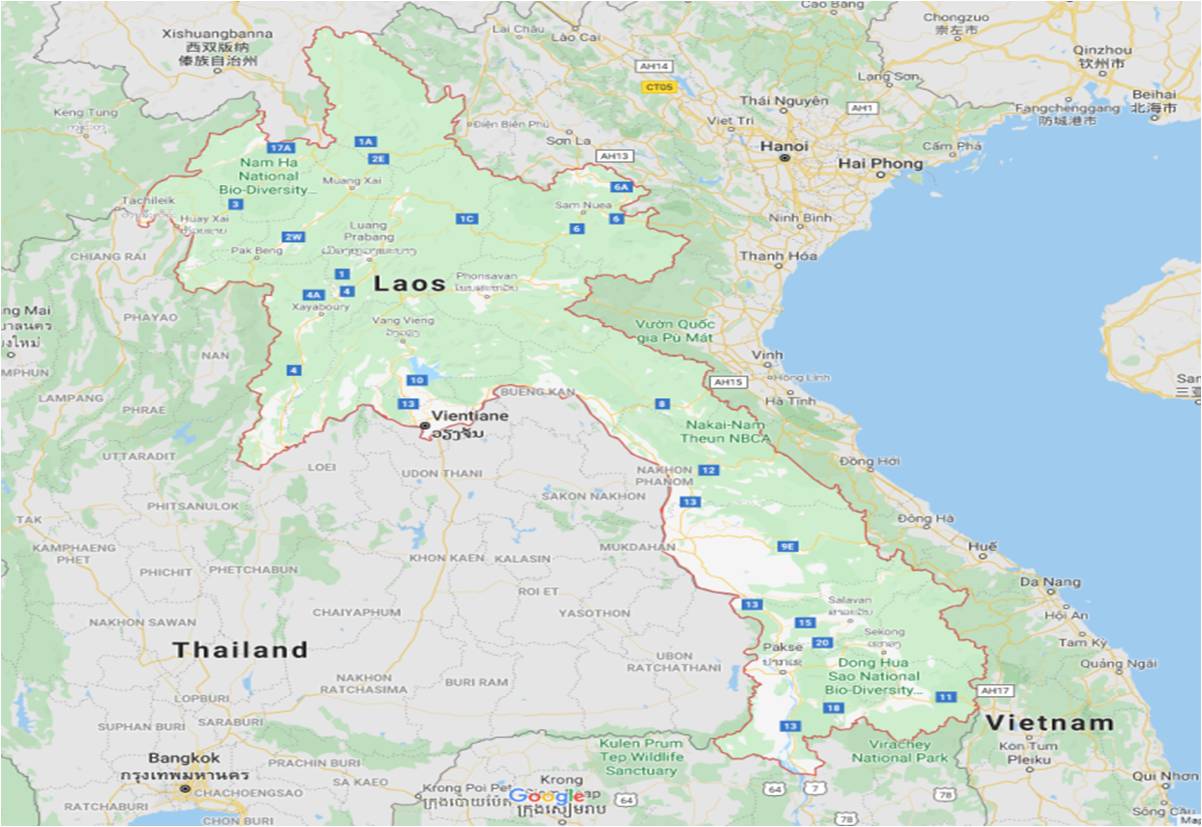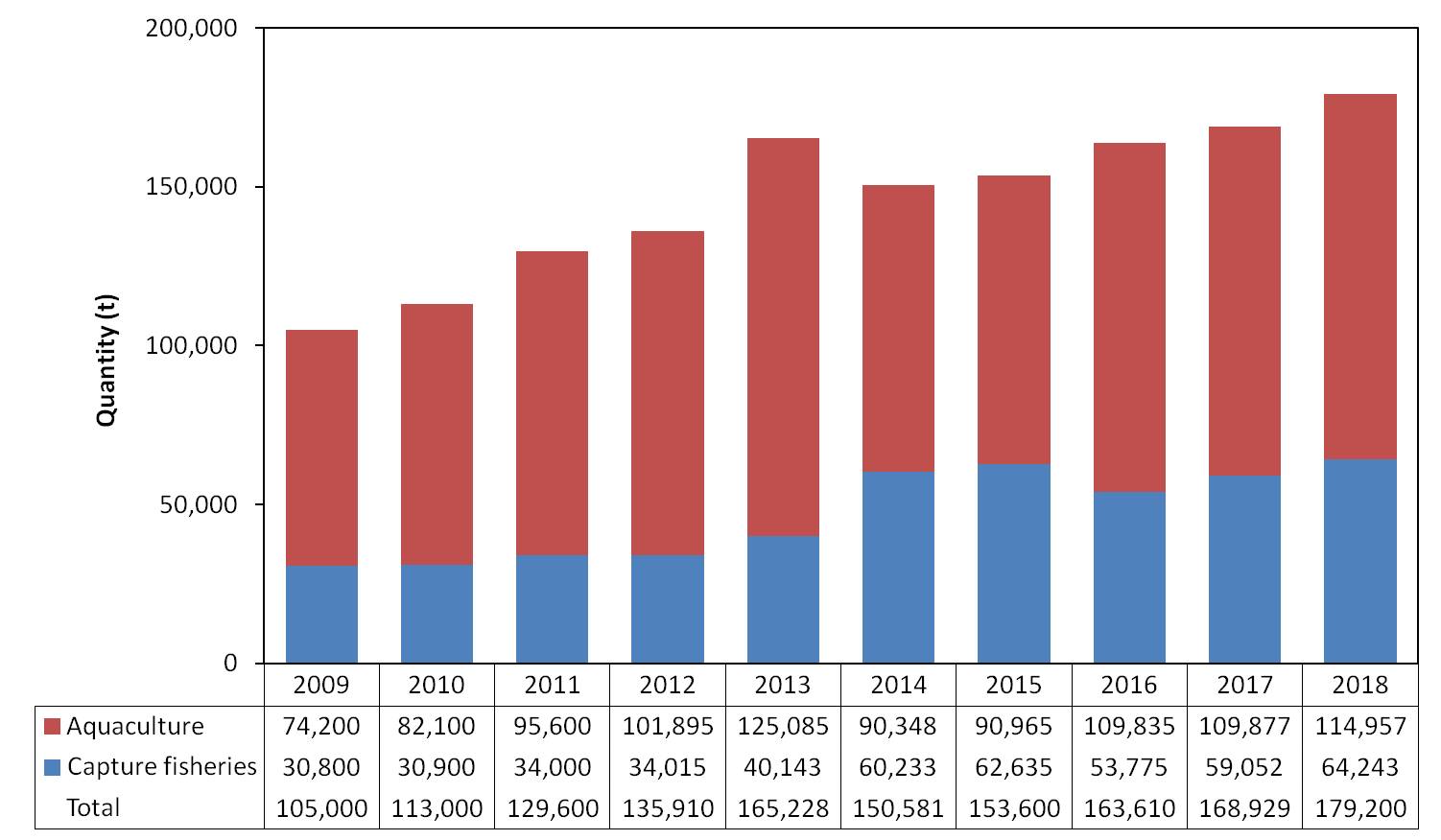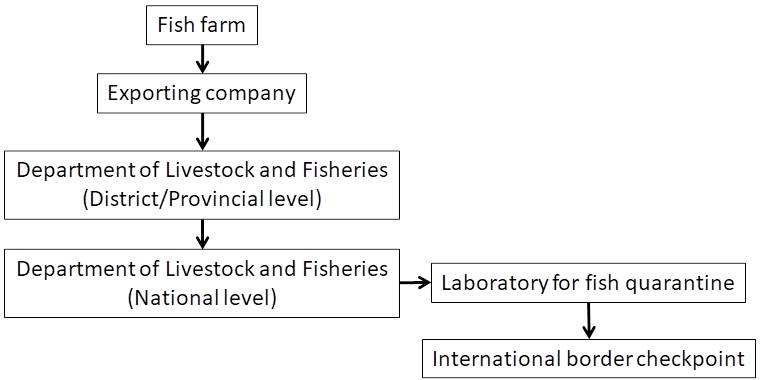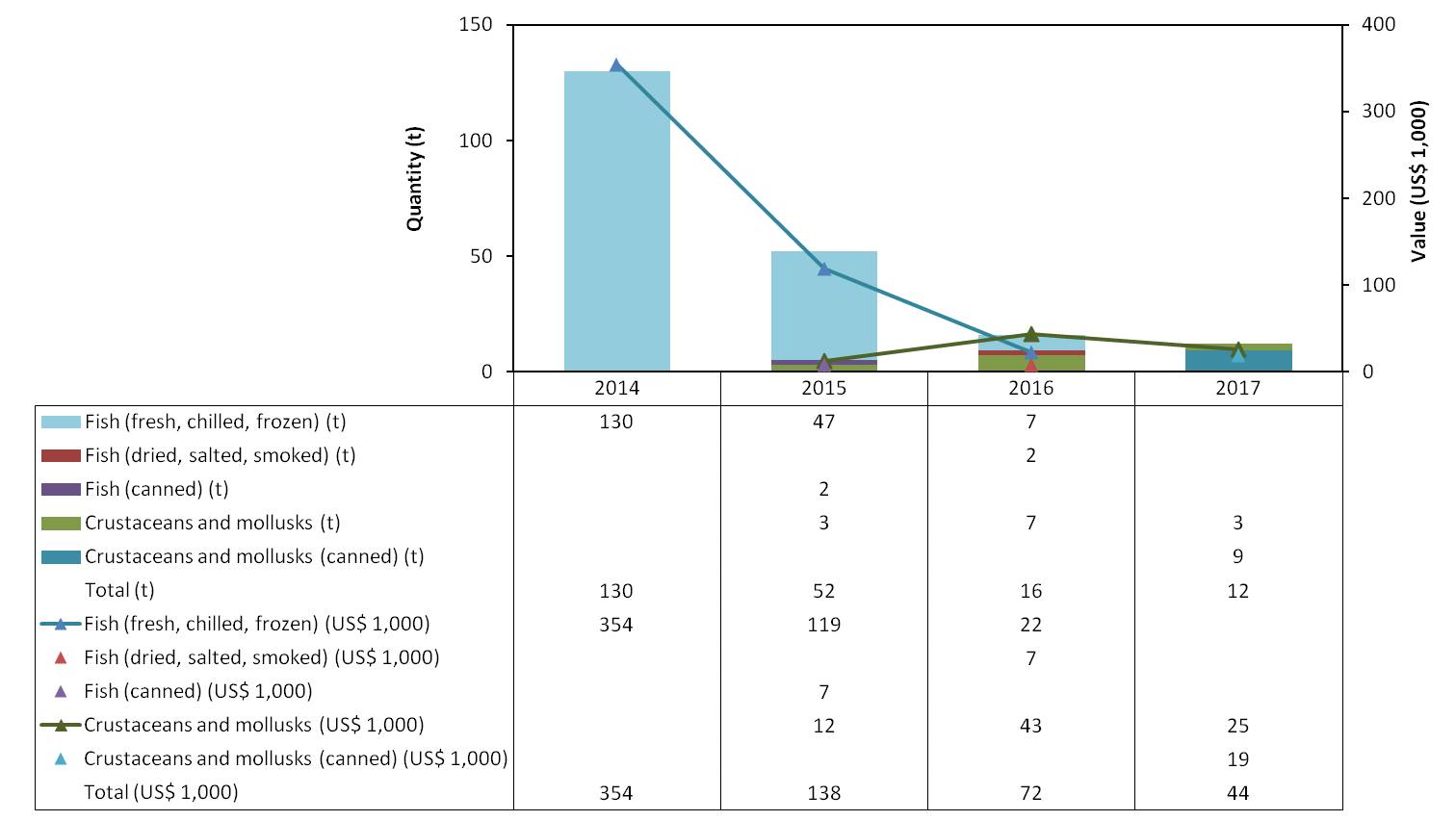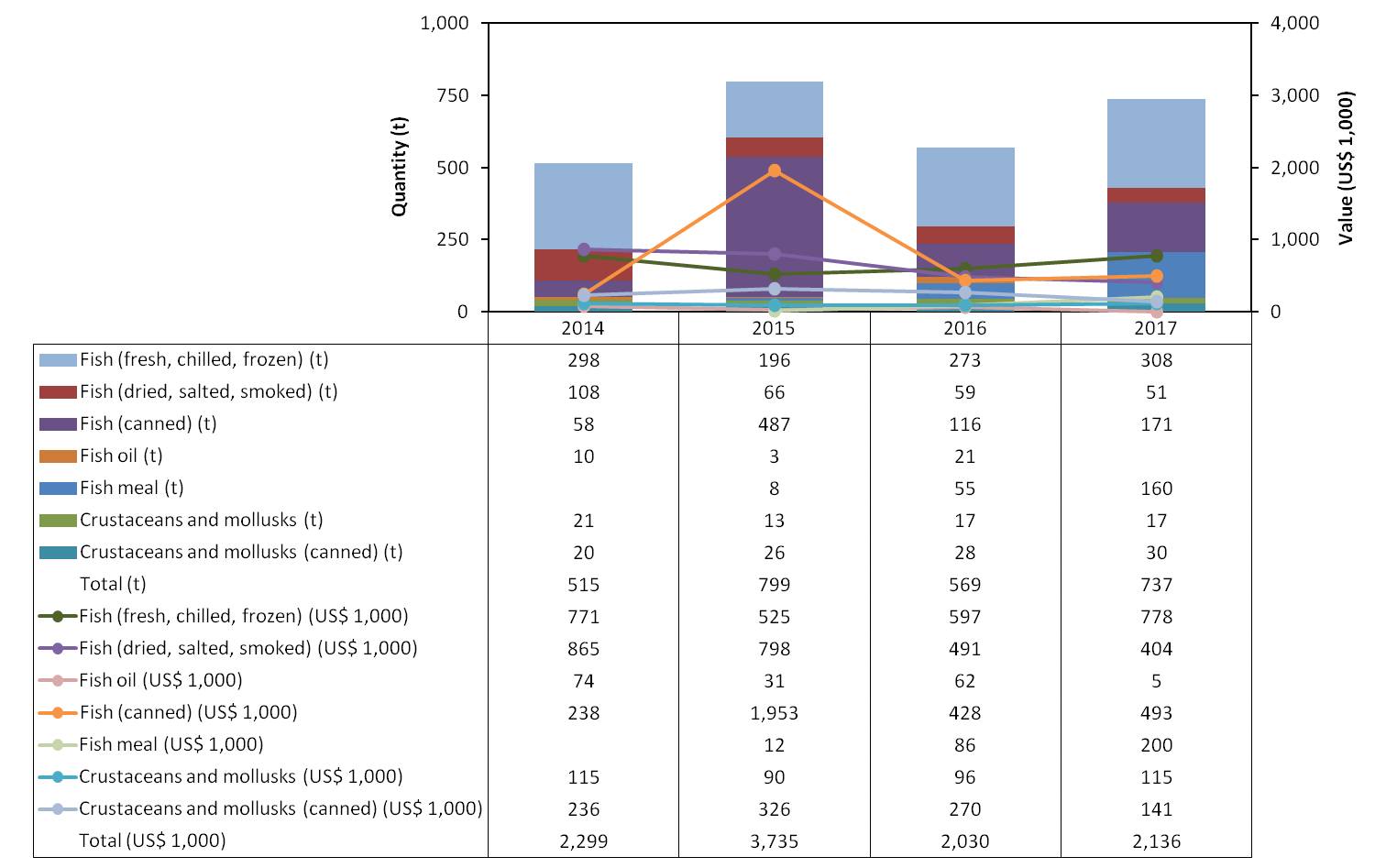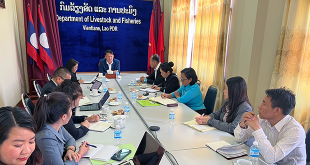By Mr. Khambor Souliphone, 2019 Regional Fisheries Policy Network (RFPN) Member for Lao PDR
INTRODUCTION
Lao PDR is a mountainous land-locked country in the heart of Southeast Asia with an area of 236,800 km2. The country is bordered by five countries, namely: China and Myanmar in the North, Cambodia in the South, Viet Nam in the East, and Thailand in the West (Figure 1). The aquatic ecosystems consist mainly of rivers and streams, hydropower and irrigation reservoirs, diversion weirs, small water bodies, flood plains, and wet season rice fields. Regarding the country’s aquatic fauna, there are 47 families of native fishes in the waters of Lao PDR out of the 91 families in the whole Lower Mekong Basin. In addition, about 37 species of amphibians, 7 species of crabs, and 10 species of shrimps have also been recorded (MRC, 2013). The country has 17 provinces with 148 districts, and 8,514 villages, and its capital city is Vientiane. Lao PDR consists of 49 different ethnic groups and Lao is the national language. As of 2017, the total population was around 6.9 million comprising 3.4 million females and 3.5 million males (LSB, 2019). About 80 percent of the population of Lao PDR lives in rural areas and depends on fishery resources and other aquatic animals (OAA) (as fresh or preserved) as sources of protein in their diets. The country’s consumption of fish and OAA products was 25.3 kg/capita/year (Phonvisay, 2013). The fisheries GDP in 2005 was about 6.8 % of the country’s GDP (FAO, 2006).
FISHERIES SECTOR
The inland fisheries in Lao PDR include aquaculture and capture fisheries. The types of aquaculture systems are fishpond culture, community fish culture in oxbow lakes and irrigation weirs, rice-fish culture, and fish cage culture. For capture fisheries, fish and OAAs are caught in the Mekong River and its tributaries, large hydropower reservoirs, natural ponds, lakes and small wetland, irrigation reservoirs, weirs, and the large areas of wet season rice fields and seasonal Mekong flood plains. The major fishing gears include cast net, trap, hook and line, gillnet, and large gillnet for giant catfish. In terms of production, the total fisheries production of Lao PDR was constantly increasing from 2009 to 2018. Aquaculture production was more than as twice as of the capture fisheries production except during 2014-2015.
FISHERIES TRADE
For domestic market, the fish and fishery products are sold at the markets near the landing sites along the Mekong River and its tributaries (Ou, Xieung, and Khan Rivers). However, the market operations in some landing sites are seasonal, thus the fish and fishery products are sold directly to restaurants (LARReC, 2003). For export (Figure 3), the companies submit relevant documents to the Department of Livestock and Fisheries at the District or Provincial office and the documents are approved at the National office. Then, the fish and fishery products are quarantined at laboratories and cleared at border check points (Table 1) before reaching the international markets.
Table 1. Border check points of Lao PDR (Source: ATLSSIAN, 2019)
|
Country |
International cross-border points |
Local cross-border points |
| Thailand |
|
|
| Cambodia |
|
|
| Viet Nam |
|
|
| China |
|
|
| Myanmar |
|
|
| Others |
|
EXPORT AND IMPORT OF FISH AND FISHERY PRODUCTS
In 2017, the country exported a total of 12 t (US$ 44,000) fish and crustaceans both as fresh and processed, which was only a tenth of the total exported volume during the past three years (Figure 4). However, the accuracy of the data could not be verified because of the lack of official reports during the recent years.
Lao PDR imported from neighboring countries such as Thailand, Vietnam, Cambodia, Myanmar, and China. During the four-year period, the imported quantity and volume fluctuated from 515 t (US$ 2.3 million) in 2014 to 737 t (US$ 2.1 million) in 2017 (Figure 5).
ISSUES ON FISHERIES TRADE
- Presence of residue and contaminant such as formalin and antibiotics in exported and imported fish and fishery products
- Restricted distribution of fish and fishery products to remote areas because of poor transportation and fish processing facilities
- Weak coordination among stakeholders in the export/import supply chain
- Low and unstable profit for fish producers
- Unreliable statistical information on fisheries trade due to limited number and capacity of human resources
LAWS ON FISHERIES TRADE
|
Law |
Description |
| Law No. 03/NA 2009 | Fisheries Strategy on Fisheries of Lao PDR for 2015-2020 |
| Law No. 0356 | Import, export, re-export, or transit of any species of wildlife or aquatic animal or any part thereof is contingent upon the grant of an authorization by the Ministry of Agriculture and Fisheries
and must be undertaken at designated border points in accordance with CITES |
| Law No. 03/NA 2009 Article 55 | Defines the responsibilities of the agencies responsible for fisheries trade, namely: Department of Livestock and Fisheries, Living Aquatic Resources Research Center, Provincial Livestock and Fisheries Office and District Livestock, and Fisheries Office |
INTERNATIONAL TRADE AGREEMENTS
Lao PDR is a member and signatory of the following bilateral, multilateral, and international agreements:
- Bilateral agreements with Vietnam, China, Cambodia, Burma, Thailand, North Korea, Mongolia, Malaysia, Russia, India, Belarus, Argentina, Kuwait, and Turkey
- Bilateral agreement between Lao PDR and the Government of Hungary signed in 2016 the, Ministry of Foreign Trade, Hungary have signed an agreement on the framework of cooperation between a governments of Agreement of Provincial of Vientiane Capital.
- Less-developed countries-specific tariff free treatment to Lao PDR goods with Chile, China, Taiwan, Kyrgyz Republic, Tajikistan, and Thailand
- Trade and Investment Framework Agreement between Lao PDR and the United States signed in 2016
- ASEAN Trade in Goods Agreement (ATIGA) in 2010
- ASEAN Economic Community
- Regional Comprehensive Economic Partnership (RCEP) Agreement
- Generalized System of Preference (GSP) with Australia, Belarus, Canada, Iceland, Japan, New Zealand, Norway, Russia, Switzerland, Turkey, Austria, Belgium, Bulgaria, Cyprus, Czech Republic, Denmark, Estonia, Germany, Greece, Finland, France, Hungary, Italy, Latvia, Lithuania, Luxembourg, Malta, Netherlands, Poland Portugal, Romania, Slovakia, Slovenia, Spain, Sweden and United Kingdom
- Member of the WTO in 2013
- Ratified the WTO’s Trade Facilitation Agreement (TFA) in 2013
WAYS FORWARDS
Lao PDR is committed to improve food security by addressing four priority areas: 1) Improved food and nutritional security through enhanced policy, planning, and implementation mechanisms; 2) Environmentally sustainable production for the market by small farmers using a value chain approach; 3) Sustainable natural resource management for crops, forests, livestock and fisheries; and 4) Reduced risk and vulnerability to natural and other disasters through prevention, preparedness, response and recovery. Furthermore, through the DLF, the country is aiming towards enhancing the fisheries trade by improving the fisheries management and production, international border checkpoint, fisheries quarantine, and fisheries marketing strategies with neighboring countries along the Mekong River.
REFERENCES
ATLSSIAN. (2019). Laos Logistics Infrastructure. ATLASSIAN Confluence Community. Retrieved from: https://dlca.logcluster.org/display/public/DLCA/2.3+Laos+Road+Assessment
DLF. (2018). Statistic of Fisheries in Lao PDR. Deparment of Livestock and Fisheries Lao PDR.
FAO. (2006). Fisheries Country Profile – Lao PDR. Food and Agricultural Organization.
FAO. (2017). Imports and exports by country and by seven fishery commodity groups. Food and Agriculture Organization.
LARReC. (2003). The Study of Fish Market Channels in Luang Prabang and Oudomxay Province. Vientiane. Mekong River Commission.
LSB. (2019). Statistrical Yearbook 2017. Lao Statistic Bureau. Retrieved from: https://www.lsb.gov.la/wp-content/uploads/2018/10/Yearbook-2017-2.pdf
MRC. (2013). An Introduction to the Fisheries of Lao PDR. Mekong River Commission.
Phonvisay, S. (2013). An Introduction to the Fisheries of Lao PDR. Phnom Penh, Cambodia. Mekong River Commission.
ACKNOWLEDGMENTS
The author would like to thank the following:
- Staff of Department of Livestock and Fisheries of Lao PDR for their support and for making available their staff to work on this report.
- Somphanh Chanphengxay, SEAFDEC Council Director for Lao PDR
- Bounthong Saphakdy, SEAFDEC Alternate Council Director for Lao PDR
- Akhane Phomsouvanh, SEAFDEC National Coordinator for Lao PDR
- Bounthanom Chamcinh, Acting Director of Division of Fisheries for providing the data
- Virgilia T. Sulit and Ms. Shiela Villamor Chumchuen for their help in improving this article
- 2019 Regional Fisheries Policy Network Members for the support
ABOUT THE AUTHOR
Mr. Khambor Souliphone is an Officer of the Fisheries Management Unit of the Department of Livestock and Fisheries, Ministry of Agriculture and Forestry, Vientiane Capital, Lao PDR. He can be reached at +85620 99755973 and Email: khambor@hotmail.com.
 SEAFDEC Southeast Asian Fisheries Development Center
SEAFDEC Southeast Asian Fisheries Development Center
